If you can look with equal appreciation and concern at timber rattlesnakes and, say, New England cottontail rabbits — both gravely imperiled in the Northeast — you’ve arrived as a naturalist.
Most Americans aren’t close to that. But there’s progress in Massachusetts thanks to the Division of Fisheries and Wildlife’s Natural Heritage and Endangered Species Program, created in partnership with The Nature Conservancy.
Many states protect their rattlesnakes, but Massachusetts possesses the spine to breed and release them — “headstarting” it’s called. So far, this desperate effort to save New England’s most endangered vertebrate has been limited to two of the five isolated populations. After centuries of persecution and habitat destruction Massachusetts is down to about 200 rattlers. The species is in no better shape elsewhere in the Northeast.
While the Division doesn’t treat its legally mandated recovery plans as classified documents, it doesn’t hold news conferences about them either. It did discuss, with appropriate entities, its plan to create a timber-rattler sanctuary on Mt. Zion — an uninhabited 1,352-acre wilderness island in Quabbin Reservoir (Boston’s water supply). The island, off limits to the public, undoubtedly sustained rattlers in the past. It has a lush prey base and a large boulder field for hibernation. No other hibernaculum exists for miles.
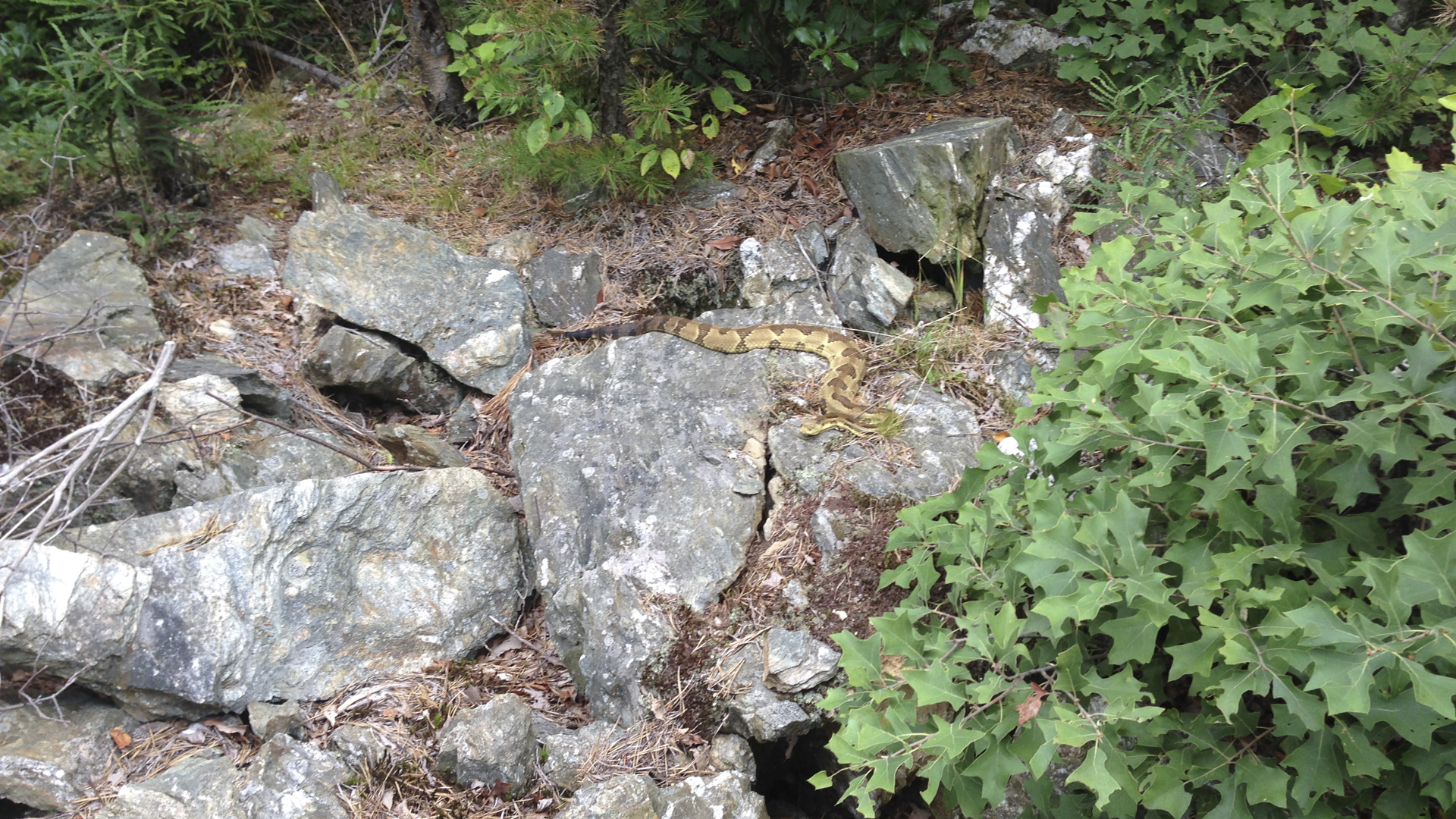
In February Peter Mallett, president of the Millers River Fishermen’s Association, got wind of the plan and fired this screed to multiple contacts: “Who are the idiots that think this is a smart thing to do? Doesn’t anyone realize that these reptiles travel through water and land and will multiply? And what about the many people that this will endanger; not just in the Quabbin, but everywhere?” Within hours the story went nationally viral.
Snakes on an Island
No one was more outraged than the state’s most powerful environmental legislator, Sen. Anne Gobi (D-Spencer), chair of the Joint Committee on Environment, Natural Resources and Agriculture. She promptly ordered an oversight hearing.
When I interviewed her, she offered this: “It puts me in a lousy position when we’re kept in the dark. If the goal is to have a population of rattlesnakes, it would seem to me that the best place would be a controlled setting like a zoo.”
Media hype and misinformation panicked the ecologically challenged. Venom was going to leak into Quabbin’s 412 billion gallons of water, poisoning Boston residents. Snakes would be slithering out of faucets. The ravenous serpents would devour every living thing on the island, then swim to the mainland and overrun the state.
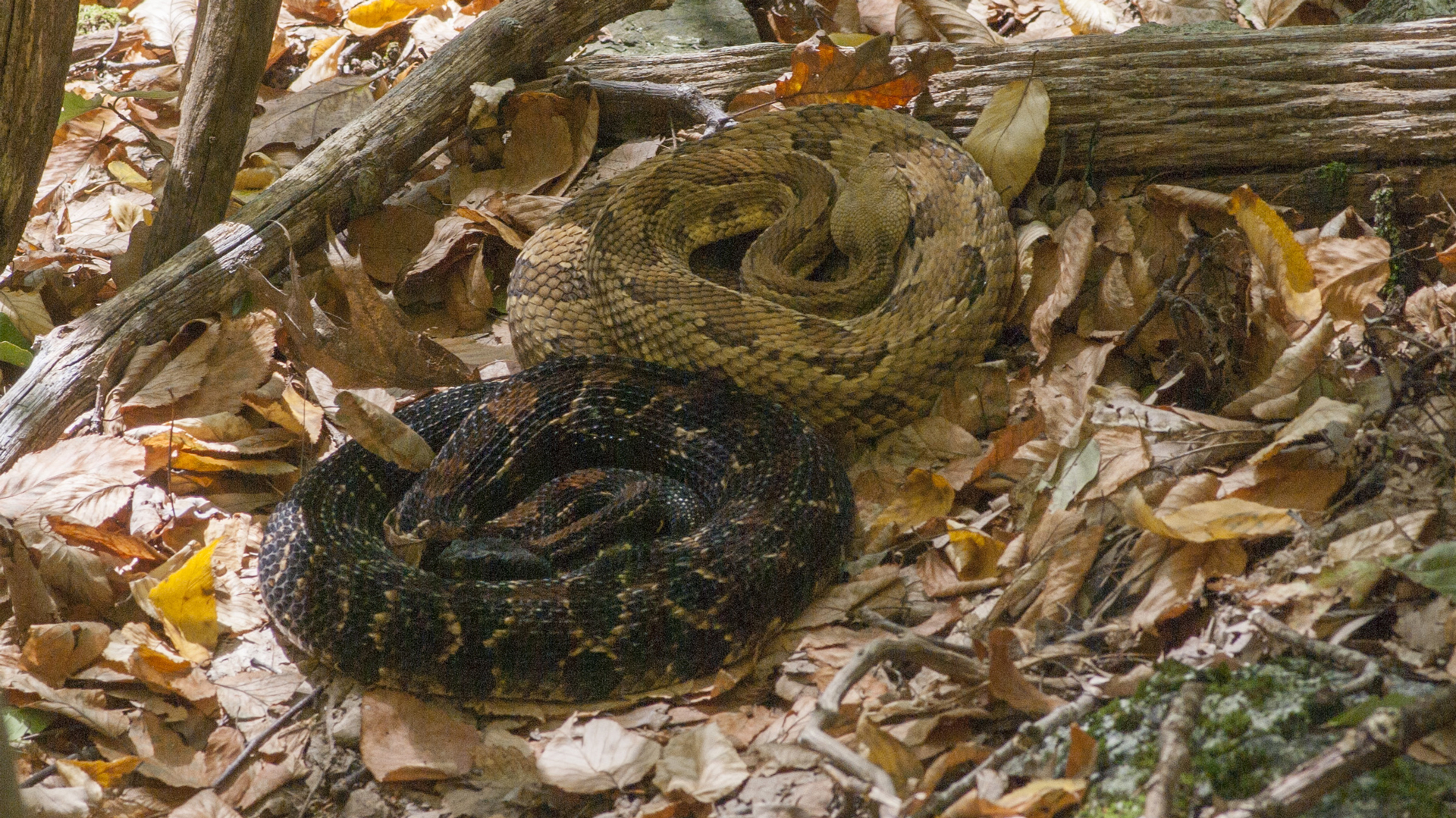
“Snakes on a plane? No, on an island, but just as scary,” screamed a Boston Globe link to hardcopy news alleging that the Division would “breed and raise 150 venomous timber rattlesnakes and turn them loose.” The Division will be delighted if it can breed five a year. Provided they survive and reproduce, natural recruitment might push the population close to 150 by mid-century.
The Globe’s Meredith Warren called the plan a “Jurassic Park-like experiment,” wrongly reporting that “your tax dollars will be paying for snake baby-sitting.” Of the Division’s $6.5 million budget, just $150,000 issues from the General Fund. Each year all Natural Heritage and Endangered Species projects combined cost taxpayers 2 cents each.
In an interview with former TNC biologist and the Division’s current Natural Heritage director Dr. Tom French, CBS Radio’s “Nightside” host Dan Rea continually voiced his hatred of all snakes. He kept asking why we need rattlesnakes, what they’re good for and why the Division is wasting resources protecting them in the wild when they’re dangerous, ugly, unpopular and, if allowed on the planet at all, should be kept in zoos. Somehow French maintained his cool, occasionally breaking through the monologue with clarity and humor.
Not Just About the Cute and Cuddly
The snakes are being headstarted at the Roger Williams Park Zoo in Providence, Rhode Island where my wife Donna and I were met by their doting keeper, conservation-program director Louis Perrotti. “We’re out to save the endangered species of New England,” he said. “It’s not just about the cute and cuddly; all species matter. It’s not for us to pick and choose. I want all the spokes in my wheel.”

The five babies stretched up against their glass cages, showing us their ivory bellies and chocolate-patched gray-brown backs. “Ugly,” they weren’t. In another year they’ll be big enough to have radio transmitters surgically implanted. If any swim off the island, they can be fetched — a precaution for them, not people.
The feared rattler explosion is impossible. Females rarely bear more than a dozen young; they only start reproducing when they’re about eight and then only every three to five years. Nor would the snakes affect Mt. Zion’s prey base. On a good growth year a timber rattler might consume three rodents, and it can get by on one.
Cornell herpetologist Dr. Harry Greene classifies snakebites as “legitimate” and “illegitimate.” In Massachusetts there have been none of the former for at least 50 years, this despite the fact that 200,000 people annually tramp through one of the rattler refuges, the Blue Hills Reservation.
Greene would classify the late Cotton Dillard’s 45 rattler bites as illegitimate. I met Dillard at the Opp, Alabama Rattlesnake Rodeo (now in its 56th year), an event that taught me much about America’s perception of rattlesnakes. He excelled at “sacking,” bare-handed competition to see who can toss the most snakes into his sack. (The secret to winning, he confided, is “to stay sober.”) Sacking was more than sport to Dillard; it was “witnessing for the Lord.” Whenever he got bitten onlookers could see that the Lord kept him alive; and no, he didn’t think this was about acquired immunity. (And no; he didn’t die of snakebite.)
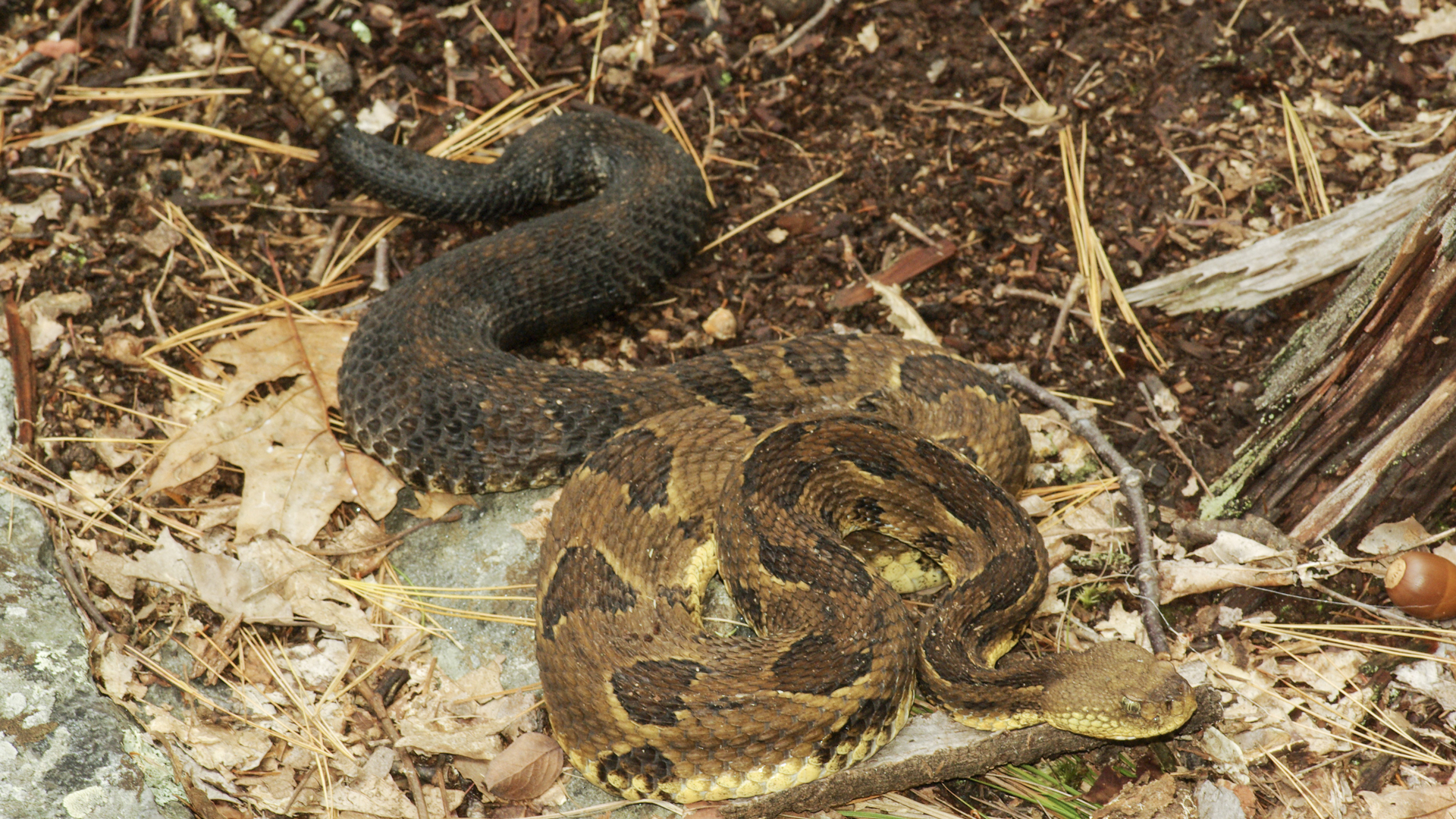
I left Dillard in order to observe the roundup, this for eastern diamondbacks. You insert a hose into the hole of a “gopher” (tortoise, not rodent), holding the end to your ear. If you hear only “poof, poof, poof,” that’s the tortoise, and you move to the next hole. If you hear “poof, poof, poof” and “buzza-buzza-brrrrraaap,” you pour in gasoline, killing the tortoise (and perhaps a cohabitating eastern indigo snake), but driving the rattler up to where you can snag it with a treble hook. Rattlesnake roundups are declining but still popular in the South and West. At the 2015 Sweetwater, Texas roundup participants killed 3,787 pounds of western diamondbacks.
A Welcome and Wise Move
In a letter to the state’s top environmental official, the Conservancy voiced a position that echoed the broader Massachusetts environmental community: “The Conservancy supports the Division’s efforts to conserve the timber rattlesnake by restoring populations in suitable habitat, with consideration for public safety, such as on Mt. Zion Island.” And French’s calm, endlessly-repeated explanations may be quieting some of the caterwauling. Now for every ignorant letter to the editor I see at least two intelligent ones.
NPR aired an interview with French and other snake experts in which enlightened host Audie Cornish asked all the right questions and listened to all the right answers.
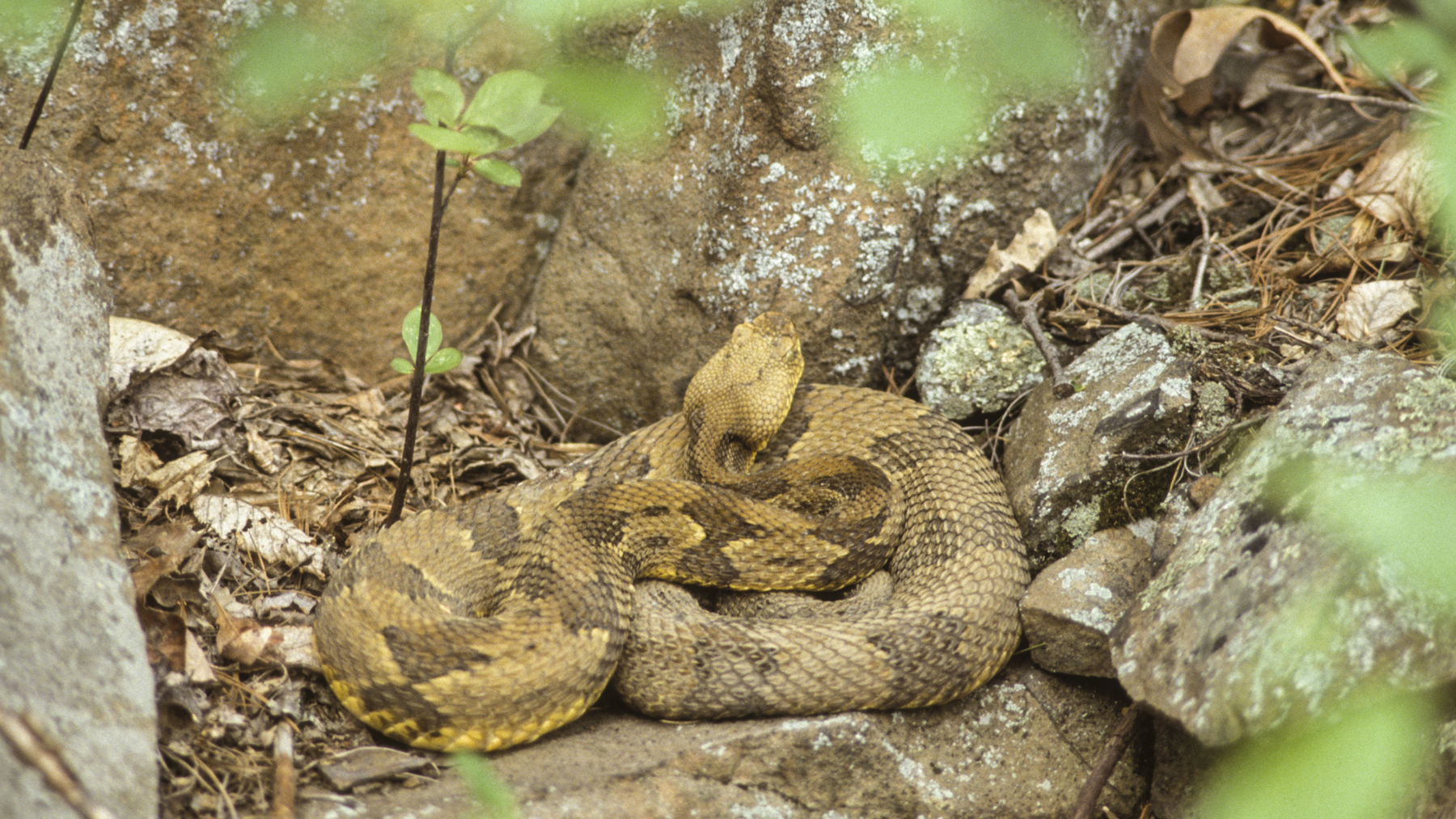
So tight is the prose of accomplished naturalist Mark Blazis, who writes the award-winning outdoor column for the Worcester (Massachusetts) Telegram, that he’s able to tell all in a mere headline: “State’s Plan to Save Timber Rattlesnake a Welcome and Wise Move.”
The Quabbin Watershed Advisory Committee has voted in favor of the project. And, ignoring an online petition demanding he nix it, Massachusetts Governor Charlie Baker has stated his support.
But the most encouraging comment I’ve heard issued from none other than Peter Mallett when I interviewed him a month after he’d ignited state and national hysteria: “Well, I’ve changed my mind,” he declared. “I’ve listened to Dr. French, and he makes a lot of sense. I know people freak out at the word ‘snake.’ But this planet was not made just for humans. Every species on Earth needs a place.”
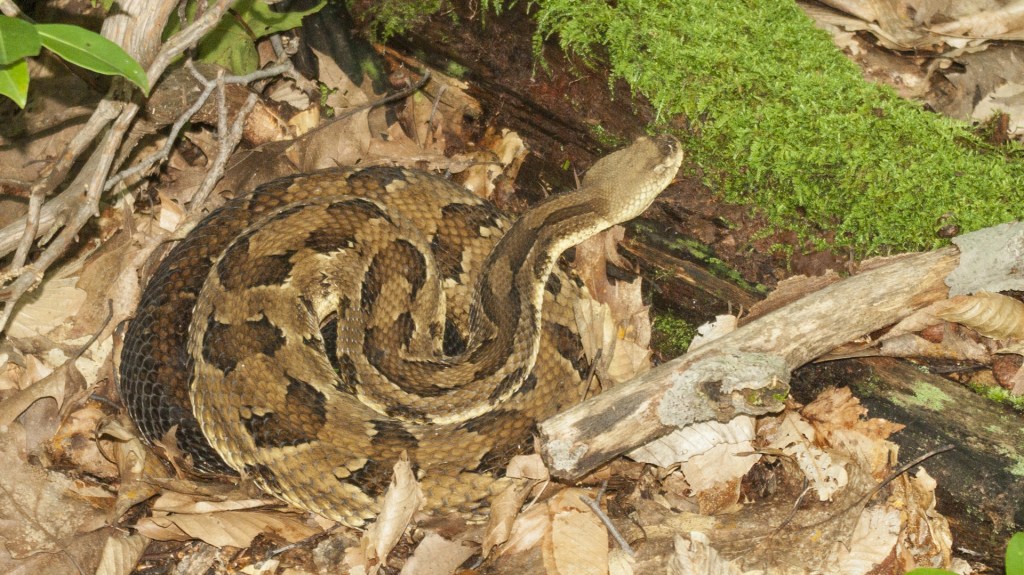



Here in coastal San Diego our rattlesnake population has crashed while the human population has exploded. I had pet snakes as a child (NOT poisonous snakes) and am part of the small human minority that views all snakes with affection. I’m passionate about their protection and gently encourage snakes on a trail to get off the trail so they don’t get run over by mountain bikes or killed by ignorant young men.
Rattlesnakes, they only bite large animals defensively: when threatened, attacked, stepped on, or handled by stupid people. They give a loud and unmistakable warning if they can and they are never aggressive if left alone or if you just back off from a coiled rattling snake. They help keep the rodent population stable and actually provide food for our large hawks. I agree strongly that they deserve protection, should be restocked if needed, and that they help a healthy ecosystem stay healthy.
Thanks for an excellent piece showcasing the breadth of species protection and restoration that’s needed. In Texas we’re still dealing with the culture and local pageantry of rattlesnake roundups. Because many favorite hunting sites are in layered and/or fractured rock, the use of gasoline in flushing out snakes threatens a broader range of biota than just the visible mammals who might be present. It also risks contaminating groundwater and streams fed by local springs.
Best wishes to the Conservancy and its Massachussets partners in the program and to the journalists and elected officials who have show a willingness to listen and learn.
The Massachusetts State Senate adopted an amendment to the budget to put a “moratorium” on the introduction of the snakes. They should be ashamed of themselves. I hope that when the Senate and House negotiate the differences between their budgets that that amendment is dropped.
Snakes in general have been given a bad rap since the time of Adam and Eve and the serpent. Not every animal is liked by every one…but each animal needs to be respected for its uniqueness and contribution to the environment and well being of everyone….don’t they collect venom for various medical conditions..? It is not the animal causing problems but humans who do not respect the rights of animals..and some don’t believe they have rights…we are part of the animal world…what makes one better then the other? Man appears to be the most dangerous of all animals… we take away their habitat and…destroy waters, trees, air, land….etc..Who is the problem? humans….
I live in Montana and lost my dog last year to one of the big brutes. I grew up in northern Washington where they were abundant. Why anywhere would deliberately want to increase their population is far beyond me!!
We all need the rattle snakes since they keep the rodent population in check. The day that this magnificent animals disappear, we will see an explosion in the population of rats that are carriers of deadly diseases. Bubonic plague is one of many deadly diseases that are transmitted by rodents. Also rats can and will be devastating to the corn and other grains farmers. Let’s keep this helpful creatures alive!
Fear and ignorance prevail:
http://www.masslive.com/politics/index.ssf/2016/05/senate_approves_one-year_morat.html
Very interesting discussion!
It seems to fall to one human generation to try and re-balance natural resources, usually having been depleted by the greed or irresponsibility of previous generations.
Whilst we are conserving some now, could we also be depleting others, in ignorance?
” Everyone, welcome to Snake Island- Tattoo, the antivenom…!…”
The Universal Ethician Church in cooperation with The Ethician Foundation established a Timber Rattlesnake Sanctuary on the 1,000 acre Holy Trinity Wilderness Cathedral in E. Texas over 15 years ago.
The sanctuary is now under a perpetual conservation easement.
George H. Russell
President
http://www.ethicianfoundation.org
Well I have to admit a snake controversy is about some of the most heartening news I’ve heard out of Massachusetts since they stopped dunking witches.
Just as many people from the east coast had an opinion on wolves so too do I have an opinion on rattlesnakes.
I think a few on some island in the Quabbin is way way too few. Massachusetts is about 10,000 square miles and rattlesnake populations of 60 per mile are not too thick underfoot. I’d say another 600,000 snakes in MA would be about right. Breed em, two litters a year of fifty or so eggs per hatch and one would be there in no time at all. Bring them in like they did the .. well you know, those critters from Jasper National Park.
A named rock star snake would generate support, I nominate the name Kaa from the Jungle Book, a learned and wise snake who helped Mowgli many times for instance in the war with the dholes, (local name for coy dog in India). Snakes are majestic and kind, wise beyond human ken and loving family members. Snakes would restore balance and trophic cascades out of the Quabbin. Jamie Clark are you listening? Where can I donate?
Great column, Ted. The New England chapter of The Wildlife Society recently issued a letter supporting MassWildlife’s plan and reinforcing some of the justifcations. We’re sharing that with all the members of Natural Resources Committee so they have it ahead of their oversight hearing.
I have learned to live with the western diamondback rattlesnake for about 35 years. NO…I didn’t want to…NO, I didn’t like it….but I sure learned a lot about them in 35 years…and I learned to respect them, too.
Relocated about 30 a year…
What a fascinating and interesting article on preserving one of our most treasured treasures, I have personally caught and let go a 4-5′ timber rattler(yellow phase).
Thanks much, Larry. Darn word limits. I know you’ve written a lot more about rattlers than me. Some debate on immunity building, though. A lot anecdotal but some scientific.
http://www.venomousreptiles.org/forums/Experts/17544
http://www.snaketype.com/snake-venom/
http://www.ibtimes.co.uk/tim-friede-snake-venom-immunity-511648